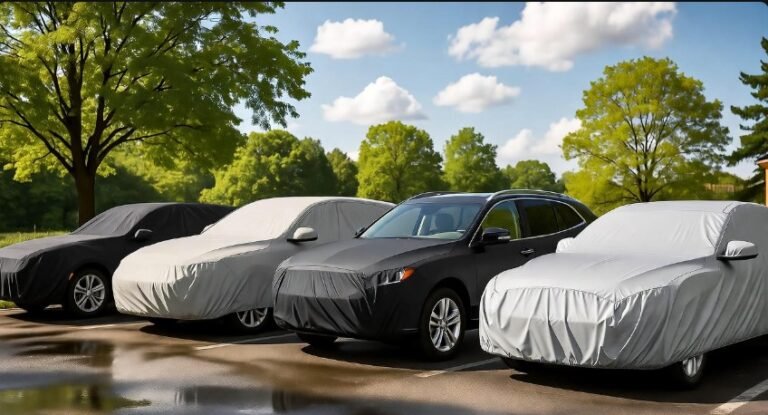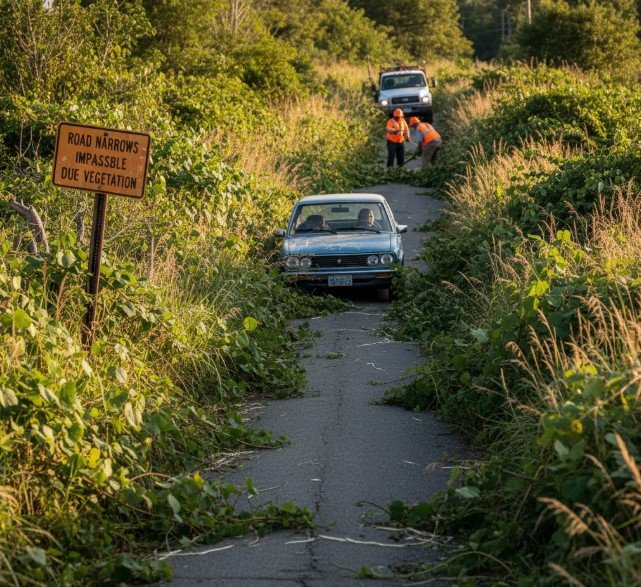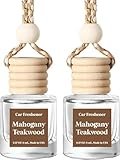Window Tinting Laws in Virginia [Updated, 2023]: What Every Driver Needs to Know Before Hitting the Road
![Window Tinting Laws in Virginia [Updated, 2023]: What Every Driver Needs to Know Before Hitting the Road 1 Window Tinting Laws in Virginia [Updated, 2023] What Every Driver Needs to Know Before Hitting the Road](https://aautomotives.com/wp-content/uploads/2025/10/Window-Tinting-Laws-in-Virginia-Updated-2023-What-Every-Driver-Needs-to-Know-Before-Hitting-the-Road.jpg)
If you’ve ever driven on a bright summer day in Virginia, you know how blinding the sun can be. That’s why window tinting has become such a popular choice among car owners—it cuts glare, keeps your car cooler, and offers privacy. But here’s the catch: Virginia window tint laws are among the strictest in the country. Back in 1999, the state put firm regulations in place to make sure that drivers stay safe and law enforcement officers can clearly see inside vehicles.
If you’re thinking of tinting your windows—or already have—understanding Virginia’s tinting regulations isn’t optional; it’s essential. Violating these rules can lead to fines, failed inspections, or even misdemeanor charges. In this guide, I’ll break down everything you need to know about window tinting laws in Virginia [Updated 2023]—from legal tint percentages to reflection limits, restricted colors, and medical exemptions. I’ll also share practical insights and a few tips that could save you from unnecessary trouble.
So, let’s dive into the world of tint percentages, reflectiveness, and rules that keep you and your car both stylish and compliant.
In This Article
- 1 Understanding the Basics: VLT and VLR Explained Simply
- 2 Legal Window Tint Darkness in Virginia (VLT Guidelines)
- 3 Legal Window Tint Reflection in Virginia (VLR Rules You Can’t Ignore)
- 4 Extra Rules That Virginia Drivers Often Overlook
- 5 Why These Laws Exist: The Safety Logic Behind the Rules
- 6 Choosing the Right Tint for Virginia Roads
- 7 Quick Reference Recap of Virginia Window Tint Laws (2023 Update)
- 8 Frequently Asked Questions About Virginia Window Tinting Laws
- 8.1 1. Can I tint my windshield fully in Virginia?
- 8.2 2. Are there differences in tint laws for SUVs and sedans?
- 8.3 3. What happens if I get pulled over with illegal tint?
- 8.4 4. Are reflective or metallic tints allowed?
- 8.5 5. Can I use red, yellow, or amber tints?
- 8.6 6. Is there any flexibility if I have a medical condition?
- 8.7 7. Do I need certification from the film manufacturer?
- 8.8 8. What about dual side mirrors?
- 9 Tips for Staying Compliant While Enjoying Your Tint
- 10 Common Mistakes Virginia Drivers Make
- 11 Why Following Virginia Tint Laws is Worth It
- 12 Final Thoughts and Practical Advice
Understanding the Basics: VLT and VLR Explained Simply
![Window Tinting Laws in Virginia [Updated, 2023]: What Every Driver Needs to Know Before Hitting the Road 2 Understanding the Basics VLT and VLR Explained Simply](https://aautomotives.com/wp-content/uploads/2025/10/Understanding-the-Basics-VLT-and-VLR-Explained-Simply.jpg)
Before we get into the numbers, let’s simplify two terms that confuse a lot of people—VLT and VLR.
-
VLT (Visible Light Transmission) measures how much light passes through your tinted windows. The higher the percentage, the lighter the tint. For example, 70% VLT means 70% of light gets through, while 20% means it’s quite dark.
-
VLR (Visible Light Reflection) measures how much light bounces back off your windows. This determines how reflective your tint is.
In Virginia, both matter because the state regulates not only how dark your tint can be but also how reflective it’s allowed to get. If you’ve ever seen a car with shiny, mirror-like windows, that’s high VLR—and it’s restricted in the state.
These measurements aren’t just technical jargon. They help ensure visibility for drivers at night and safety for law enforcement officers during traffic stops. Think of it as balancing comfort with safety. You can still enjoy a cool, shaded ride without crossing legal limits.
Legal Window Tint Darkness in Virginia (VLT Guidelines)
Let’s talk numbers—because when it comes to Virginia window tint laws, precision matters. What’s allowed for one vehicle type might not be for another. The state distinguishes between passenger vehicles (like sedans) and multi-purpose vehicles (like SUVs or vans).
Here’s a clear breakdown:
For Passenger Vehicles (Sedans):
-
Windshield: Only non-reflective tint is allowed above the manufacturer’s AS-1 line or the top 5 inches of the windshield.
-
Front Side Windows: Up to 50% VLT allowed.
-
Back Side Windows: Up to 35% VLT allowed.
-
Rear Window: Up to 35% VLT allowed.
For Multi-Purpose Vehicles (SUVs & Vans):
-
Windshield: Non-reflective tint allowed above the AS-1 line or top 5 inches.
-
Front Side Windows: Up to 50% VLT allowed.
-
Back Side Windows: Any darkness permitted.
-
Rear Window: Any darkness permitted.
That means if you drive an SUV, you have more flexibility for your rear and side windows than someone driving a sedan. However, the front windows must still meet the 50% light transmission rule.
Here’s a simple comparison table for quick reference:
| Vehicle Type | Windshield | Front Side | Back Side | Rear Window |
|---|---|---|---|---|
| Sedan | Non-reflective above AS-1 or top 5″ | 50% | 35% | 35% |
| SUV/Van | Non-reflective above AS-1 or top 5″ | 50% | Any darkness | Any darkness |
Even though a 35% tint might sound dark, it’s still quite transparent when viewed from outside. What most people don’t realize is that factory tint (especially on SUVs) already has some darkness built in, so adding more could easily push it beyond legal limits. That’s why always measuring before applying new film is smart.
Legal Window Tint Reflection in Virginia (VLR Rules You Can’t Ignore)
Reflection laws are often overlooked, but in Virginia, VLR is strictly regulated. This rule prevents cars from becoming dangerously reflective and causing glare for other drivers. It’s also about safety—officers need to be able to see inside vehicles during stops.
For Passenger Vehicles (Sedans):
-
Front Side Windows: Can reflect up to 20% of light.
-
Back Side Windows: Can reflect up to 20% of light.
For Multi-Purpose Vehicles (SUVs and Vans):
-
Front Side Windows: Maximum 20% reflection.
-
Back Side Windows: Maximum 20% reflection.
To visualize, think of 20% reflection as a soft sheen, not a mirror. If your tint shines like polished chrome, you’re likely violating the rule.
Maintaining the right VLR balance is about safety and aesthetics. Excessive reflection might look flashy, but it can distract other drivers and even reduce your own visibility. Keeping within the 20% limit keeps your tint stylish and street-legal.
Extra Rules That Virginia Drivers Often Overlook
Beyond VLT and VLR, Virginia’s tint laws come with additional rules that many car owners don’t know about—but they’re just as important. Let’s break these down clearly:
1. Side Mirrors Are Mandatory
If your rear window or side windows are tinted, Virginia law requires you to have dual side mirrors. This ensures proper visibility and helps compensate for the reduced transparency caused by the tint.
2. Restricted Colors
Virginia bans red, yellow, and amber tints completely. These colors can interfere with visibility and resemble emergency vehicles, which can cause confusion. Stick with neutral tones like gray, black, or bronze to stay compliant.
3. Tint Variance Allowance
The state allows a 7% variance, meaning your tint can be slightly darker or lighter than the legal limit. For example, if the law says 50%, a reading of 46.5% might still pass. However, this doesn’t mean you can push the boundaries too far—inspectors and officers often use calibrated devices to measure VLT accurately.
4. No Manufacturer Certification Needed
Unlike some states, Virginia doesn’t require film manufacturers to certify their products. That means when you buy window film, you don’t need a special label or paperwork from the brand. Still, always choose a reputable installer who understands local laws.
5. Stickers (Optional but Smart)
Though stickers indicating tint compliance aren’t mandatory, many professional shops apply one to your driver’s side door jamb. It’s a small detail that can save you from unnecessary stops or arguments during inspections.
6. Medical Exemptions
If you suffer from a medical condition that requires extra light protection—like lupus or certain skin sensitivities—you may qualify for a medical exemption. You’ll need documentation from your doctor and approval from the Virginia Department of Motor Vehicles (DMV). Once granted, your tint can legally be darker than standard limits.
7. Penalties for Violations
Ignoring tint laws can get expensive. In Virginia:
-
A first offense is a Class 3 misdemeanor, which could mean fines and possibly jail time.
-
A second offense upgrades to a Class 2 misdemeanor, carrying heavier penalties.
Law enforcement doesn’t take these violations lightly, so compliance isn’t just about avoiding tickets—it’s about driving responsibly.
Why These Laws Exist: The Safety Logic Behind the Rules
At first glance, Virginia’s tint laws might seem overly strict. But there’s sound reasoning behind them.
Dark tints reduce visibility, especially at night or during rain. If you’ve ever tried backing out of a driveway with dark windows after sunset, you know how hard it can be to spot pedestrians or cyclists. Lighter tints help maintain that crucial visibility.
Then there’s the law enforcement aspect. Officers must be able to see inside a vehicle for safety reasons during stops. Dark windows can raise red flags and make those situations more tense than necessary.
Lastly, reflective tints can endanger other drivers by bouncing sunlight into their eyes. The 20% reflection limit helps prevent dangerous glare on busy highways.
So, while it might feel restrictive, these laws aim to balance comfort, style, and public safety. Understanding them means you can make informed decisions—and still enjoy the sleek look and cooling benefits of tinted glass.
Choosing the Right Tint for Virginia Roads
Picking the right tint isn’t just about aesthetics; it’s about making sure your vehicle passes inspection and stays within legal limits.
Here are a few practical tips to help you choose wisely:
-
Measure before you tint. Many cars already have factory tint, especially SUVs. Adding new film on top can push you over the limit.
-
Ask your installer about the exact VLT rating. A good shop will test your windows and recommend compliant options.
-
Avoid reflective or metallic tints. They may look cool, but they can exceed the reflection limit.
-
Keep your receipt and paperwork. Even though certification isn’t required, having proof of installation and film type can help if questions arise later.
-
Check your tint regularly. Over time, tints fade or bubble, which might affect their transparency and cause inspection issues.
If you follow these tips, you’ll have windows that look great, perform well, and keep you fully compliant with Virginia tinting laws.
Quick Reference Recap of Virginia Window Tint Laws (2023 Update)
Here’s a summarized look at what we’ve covered so far:
| Category | Passenger Vehicles | SUVs/Vans |
|---|---|---|
| Windshield | Non-reflective above AS-1 or top 5″ | Non-reflective above AS-1 or top 5″ |
| Front Side Windows | Max 50% darkness | Max 50% darkness |
| Back Side Windows | Max 35% darkness | Any darkness |
| Rear Window | Max 35% darkness | Any darkness |
| Reflectiveness (All Windows) | Max 20% reflection | Max 20% reflection |
| Restricted Colors | No red, yellow, amber | No red, yellow, amber |
| Variance Allowed | 7% | 7% |
| Dual Side Mirrors Required | If back window tinted | If back window tinted |
| Medical Exemptions | Allowed | Allowed |
Frequently Asked Questions About Virginia Window Tinting Laws
Understanding Virginia window tint laws can feel overwhelming, so here are some FAQs that cover common concerns:
1. Can I tint my windshield fully in Virginia?
No. You can only apply non-reflective tint above the manufacturer’s AS-1 line or on the top 5 inches of the windshield. Tinting the entire windshield is illegal, as it significantly reduces visibility for both you and law enforcement officers.
2. Are there differences in tint laws for SUVs and sedans?
Yes. While front side windows have the same 50% VLT limit for both vehicle types, SUVs and vans can have any darkness on their back side and rear windows, whereas sedans are limited to 35%. This distinction is due to vehicle design and visibility considerations.
3. What happens if I get pulled over with illegal tint?
A first offense in Virginia is considered a Class 3 misdemeanor, which may result in fines or even jail time. Repeat offenses escalate to a Class 2 misdemeanor, with stiffer penalties. Always check your tint before driving to avoid legal trouble.
4. Are reflective or metallic tints allowed?
No. Virginia restricts VLR to a maximum of 20% for all vehicle types. Highly reflective or mirror-like tints are illegal and could lead to fines. Stick with neutral, non-reflective films to stay compliant.
5. Can I use red, yellow, or amber tints?
No. These colors are strictly prohibited in Virginia because they can be mistaken for emergency vehicle lights and impair safe driving. Neutral shades like gray, black, or bronze are recommended.
6. Is there any flexibility if I have a medical condition?
Yes. Virginia allows medical exemptions for darker tints if a doctor confirms the necessity. You’ll need documentation and DMV approval, which legally permits darker windows than standard limits.
7. Do I need certification from the film manufacturer?
No. Virginia doesn’t require manufacturer certification, but it’s wise to use reputable shops and keep proof of installation in case an inspector questions your tint.
8. What about dual side mirrors?
If your rear windows are tinted, Virginia law requires dual side mirrors for proper visibility. This is mandatory for both passenger and multi-purpose vehicles.
Tips for Staying Compliant While Enjoying Your Tint
If you want legal, stylish, and safe window tint, here’s a checklist to keep in mind:
-
Use a calibrated meter: Always verify your VLT percentage before installation.
-
Hire professional installers: Experts know Virginia’s limits and ensure compliance.
-
Avoid experimental colors or shades: Stick with neutral tones to prevent issues during inspections.
-
Check tint after a few months: Sunlight can fade tints, affecting VLT and VLR percentages.
-
Keep installation documents: Proof of purchase and installation can protect you if questioned by authorities.
A little diligence upfront prevents headaches down the road. It’s far easier to measure twice and cut once than deal with tickets, fines, or forced removal of tint.
Common Mistakes Virginia Drivers Make
Even experienced drivers sometimes overlook critical details:
-
Ignoring reflection limits: Many focus only on darkness but forget VLR. Overly reflective windows are illegal and dangerous.
-
Tinting the entire windshield: Full windshield tint can be a first offense ticket in seconds.
-
Assuming SUV rules apply to sedans: Always confirm your vehicle type; laws differ between sedans and multi-purpose vehicles.
-
Skipping inspections after tinting: Regular inspections help ensure compliance and prevent penalties.
-
Using prohibited colors: Brightly colored tints are illegal and can confuse other drivers.
Awareness is key. By understanding the rules, you not only comply with the law but also enhance safety and enjoy the benefits of tinted windows.
Why Following Virginia Tint Laws is Worth It
Tinting your windows has clear advantages: it blocks harmful UV rays, keeps your car cooler, and increases privacy. But doing it illegally is not worth the risk.
Virginia’s laws balance style, comfort, and safety. Following them:
-
Protects your wallet from fines and penalties.
-
Ensures maximum visibility for you and other drivers.
-
Reduces the chance of conflicts with law enforcement.
-
Maintains resale value—illegal tints can cause inspection failures and reduce car value.
Compliance doesn’t mean sacrificing style. Modern films offer high performance within legal limits, providing heat rejection, glare reduction, and privacy without breaking the law.
Final Thoughts and Practical Advice
Virginia’s window tinting laws [Updated 2023] may seem complex at first glance, but they are logical when viewed through the lens of safety and responsibility. Knowing the difference between VLT and VLR, understanding permissible percentages for your vehicle type, and adhering to extra regulations like mirror requirements and color restrictions ensures that your tinted windows are both stylish and legal.
If you ever feel uncertain, consult a professional installer familiar with Virginia tint laws or check with the DMV for clarification. Remember, a well-tinted car should enhance your driving experience—not compromise your safety or legality.
By following these guidelines, you can enjoy all the benefits of window tinting—reduced heat, glare, and UV exposure—while staying completely compliant with state law. Think of it as the perfect balance between comfort, safety, and peace of mind on Virginia roads.






